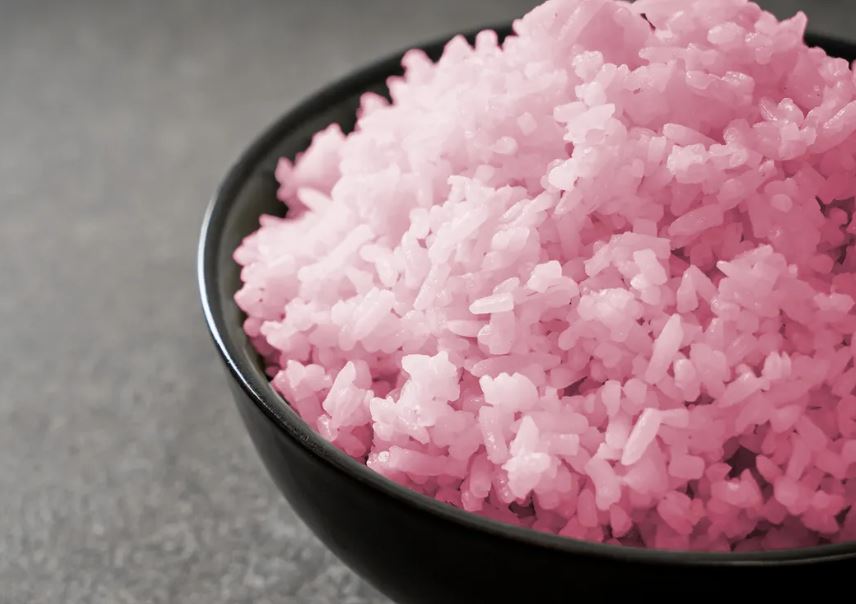Revolutionary Rice-Meat Hybrid: A Sustainable Future
In a groundbreaking development, scientists have introduced a novel lab-grown meat product that merges rice grains with cow cells, offering a potential solution for sustainable dining. Reported in Matter on February 14, this rice-meat hybrid utilizes rice as a scaffold to support the growth of fat or muscle cells, creating a unique and nutritious dish that could revolutionize the way we consume meat.
The Science Behind the Hybrid
At Yonsei University in Seoul, South Korea, chemical engineer Sohyeon Park and her team have been pioneering this innovative approach to meat production. By coating rice grains with fish gelatin and enzymes, they created a conducive environment for cow cells to adhere and proliferate. The result is a pinkish-brown mash that not only looks intriguing but also tastes “nutty and a little sweet,” according to Park.
Environmental Benefits
The traditional method of meat production, which involves farming cattle, is known to be resource-intensive and environmentally detrimental. Cattle farming occupies vast expanses of pastureland and contributes over 100 million metric tons of methane emissions annually. Scientists have been exploring various alternatives, including cricket farming and fermented fungal spores, to mitigate these environmental impacts.
Lab-Grown Meat as a Solution
Lab-grown meat, such as the rice-meat hybrid, presents a promising alternative. By integrating cow cells with rice grains, the hybrid offers a sustainable and innovative way to produce meat-like food without the environmental drawbacks associated with conventional meat production. The fish gelatin coating plays a crucial role in helping the cells adhere to the rice grains, while the rice itself provides a 3-D structure for the cells to grow, mimicking the texture and density of meat.
Nutritional Value and Future Prospects
Nutritionally, the rice-meat hybrid currently contains 8 percent more protein than regular rice, but Park and her colleagues aim to increase this by incorporating more cow cells into each grain. The choice of rice as the base ingredient was somewhat serendipitous, yet it proved to be highly effective. Rice is not only inexpensive and nutritious but also a staple food worldwide, making it an ideal candidate for this innovative food product.
Potential for Mass Adoption
While the rice-meat hybrid is not yet ready for mass consumption, its potential is significant. The combination of sustainability, nutritional benefits, and widespread acceptance of rice positions this hybrid as a viable alternative to traditional meat. As researchers continue to refine the process and enhance the nutritional profile of the hybrid, it could soon become a popular choice for environmentally conscious consumers.
Conclusion
The advent of the rice-meat hybrid represents a monumental step towards sustainable and innovative food production. By leveraging the natural properties of rice and the advanced techniques of lab-grown meat, scientists are paving the way for a future where our dietary choices are both environmentally friendly and nutritionally beneficial. As research progresses, this revolutionary hybrid could transform our dining experiences and contribute significantly to reducing the environmental impact of meat production.
Summary Table:
| Key Learning Points | Details |
|---|---|
| Lab-grown rice-meat hybrid | Merges rice grains with cow cells |
| Nutritional benefits | Contains 8% more protein than regular rice |
| Environmental impact | Potentially reduces methane emissions from cattle farming |
| Innovative process | Uses fish gelatin and enzymes to grow cow cells on rice grains |
| Future prospects | Aims to increase protein content and achieve mass adoption |

Sunil Garnayak is an expert in Indian news with extensive knowledge of the nation’s political, social, and economic landscape and international relations. With years of experience in journalism, Sunil delivers in-depth analysis and accurate reporting that keeps readers informed about the latest developments in India. His commitment to factual accuracy and nuanced storytelling ensures that his articles provide valuable insights into the country’s most pressing issues.



